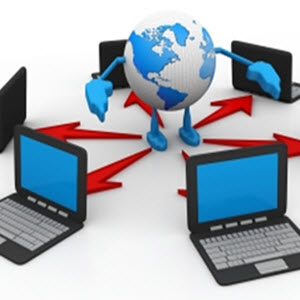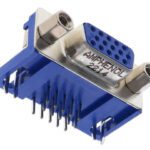Point of View: Technologies to Support the Internet of Things
As wireless and mobile technology advances in the silicon world, interconnect suppliers are developing products for higher speeds and bandwidth with reduced footprints. Dave Jakubowski of Avnet shares his point of view on developing technologies to support the Internet of Things.
 In thinking about the evolution of electronics — we first had wired devices, then mobile phones, and now wireless devices in many form factors — one constant has remained and always will: Semiconductor technology must be connected to something to function. As this technology advances in the silicon world, interconnect and passives suppliers are developing products that can handle the speeds and bandwidth, with reduced footprints that continue to enable the electronics world.
In thinking about the evolution of electronics — we first had wired devices, then mobile phones, and now wireless devices in many form factors — one constant has remained and always will: Semiconductor technology must be connected to something to function. As this technology advances in the silicon world, interconnect and passives suppliers are developing products that can handle the speeds and bandwidth, with reduced footprints that continue to enable the electronics world.
The Internet of Things continues to blossom in areas where machines are connected to machines and the ability to share information is instantaneous. Think about the possibilities that now exist. One can simulate environments on the factory floor and do experimental production work. This can and will have an impact on time to market, changing the duration of pre-production. Think about the possibility of lab experiments that can be simulated from the Internet, dramatically reducing the length of wait time for results.
A number of recent product announcements have been driven by the opportunity brought to us by the Internet of Things. I wanted to share a couple that illustrate how and what the suppliers are thinking. Recently, a supplier announced a new product for LED televisions and monitors that allows set manufacturers to design various models around a single connector type and PCB footprint pattern; this drives standardization as a practice. Another new product drives high current design. The need for “direct power” has become increasingly critical within Internet of Things environments, with a specific requirement for higher speeds, more cost-effective solutions, and reduced space and board-routing constraints. Suppliers have introduced products to solve this issue.
The massive number of connected devices is staggering. Experts say there are 500 million wired devices, 5 billion mobile phones, and more than 12 billion wireless devices connected today. Predictions from industry leaders show this number growing to 50 billion connected devices within the next five years. Many new applications and new electronics users that traditionally have not been part of the supply chain will increase the demands on the industry. You can be sure that suppliers and their channel partners have developed plans and programs to handle this growth.
Regardless of the application, whether factory floor, harsh environment, data center, wearables, farming, home, health monitoring, and many others, count on more innovations continuing to build on existing innovations, with everything connected to the Internet.
 Dave Jakubowski is vice president of IP&E supplier management, Avnet Electronics Marketing Americas.
Dave Jakubowski is vice president of IP&E supplier management, Avnet Electronics Marketing Americas.







